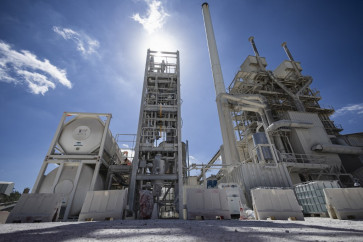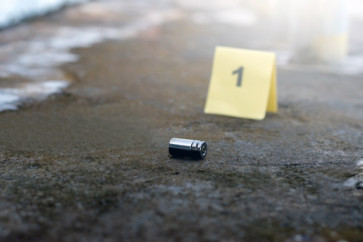Popular Reads
Top Results
Can't find what you're looking for?
View all search resultsPopular Reads
Top Results
Can't find what you're looking for?
View all search resultsMuseum gets pre-historic elephant bones
The Geology Museum in Bandung, West Java, received a new and spectacular collection Wednesday consisting of pre-historic elephant bones excavated from sites in Blora, Central Java
Change text size
Gift Premium Articles
to Anyone
T
he Geology Museum in Bandung, West Java, received a new and spectacular collection Wednesday consisting of pre-historic elephant bones excavated from sites in Blora, Central Java.
"The fossilized specimen is special not only due to its age of around 15,000 years, but also because it fills a missing link in the history of the elephant in Indonesia. Further, the bones were found in complete condition," museum head Yunus Kusumbrata said.
However, he added that only around 30 percent of the bones were brought to Bandung while the rest were still being excavated at the Medalem subdistrict in Blora.
The fossils were from the Elephas hysundrindicus species, which was estimated to have lived during the Pleistocene epoch about 1.8 million to 11,500 years ago.
It is believed to be the missing link between the pre-historic Mastodon and Stegodon elephants and the modern elephant, Elephas maximus.
"It serves as a birthday present for the museum which will celebrate its 80th anniversary next month," said Yusuf.
The museum was established on May 16, 1929, with a collection of around 250,000 stones and minerals along with 60,000 fossils.
The head of the museum's Vertebrata team, Iwan Kurniawan, said the fossils were found in the ruins of a terraces by experts studying the history of floods linked to the ancient Bengawan Solo river on March 26.
The team consisted of Iwan, Fachroel Azis, Gert Dirk van Berg, Sidarto, Hani Oktaviani and Dadang.
During the excavation process, which began on April 2, a cliff area in Medalem had to be cut-away twice before the team discovered the fossil. They predicted that because of the elephant's position, it was probably trapped by a flood.
"It is very rare to find a complete fossil in one site," he said.
"Usually they are scattered as a result of attack from a predator or are washed away by floods, leaving us with incomplete bones which are difficult to reconstruct."
The first batch of bones consisted of 27 fragments including portions of skull, hind leg, back and ribs.
The team also found worn-down teeth still attached to the jaw at one excavation site.
Based on the size of the excavation site, the team were able to conclude that the elephant was an adult with a height of 2.5 to 4 meters.
The bones were transferred to Bandung after undergoing complex preparation using tools to prevent the specimens from fracturing during transportation.
The museum's palaeontologists have not yet determined the age of the fossil.
"We need to conduct carbon dating tests, including examining the age of sand trapped in the elephant, to determine whether there was flooding in the Bengawan Solo river back then," said Iwan.
The remaining bones will be excavated mid-April after the legislative elections.










